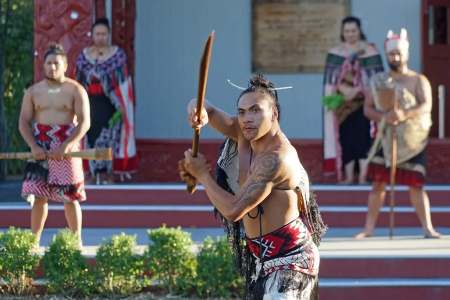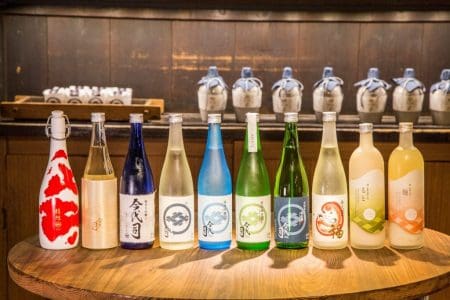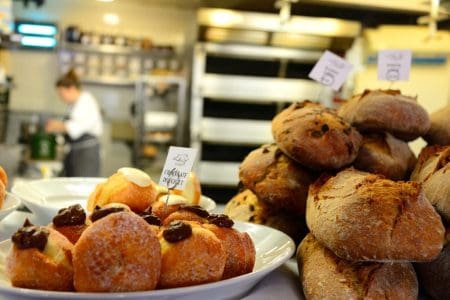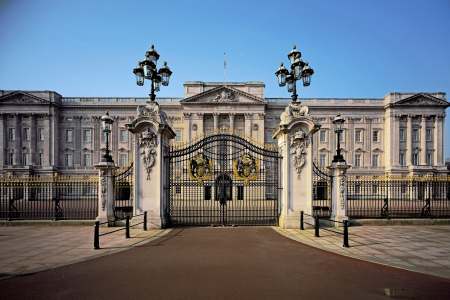Mark Bibby Jackson takes a road trip through Ayrshire, Dumfries and Galloway on the trail of Rabbie Burns and meets a couple of US Presidents along the way.
“Auld Ayr, wham ne’er a town surpasses / For honest men and bonie lasses.” Thus wrote Scotland’s national poet Robbie Burns in Tam o’ Shanter in 1790. Although I cannot possibly comment on the honesty and beauty of the local inhabitants – mine was a fleeting visit – I can confirm that Ayr is a bonny town in its own right, with a very attractive seafront and town centre.
The aim on my trip to Ayr was to visit friends, Boon and George, who have recently moved there from London, following the footsteps of Burns and to explore the surrounding countryside of Ayrshire down to Dumfries and Galloway. Having been brought up in the area Boon was proved the most admirable tour guide, while George became our unofficial photographer.
On the Trail of Robbie Burns
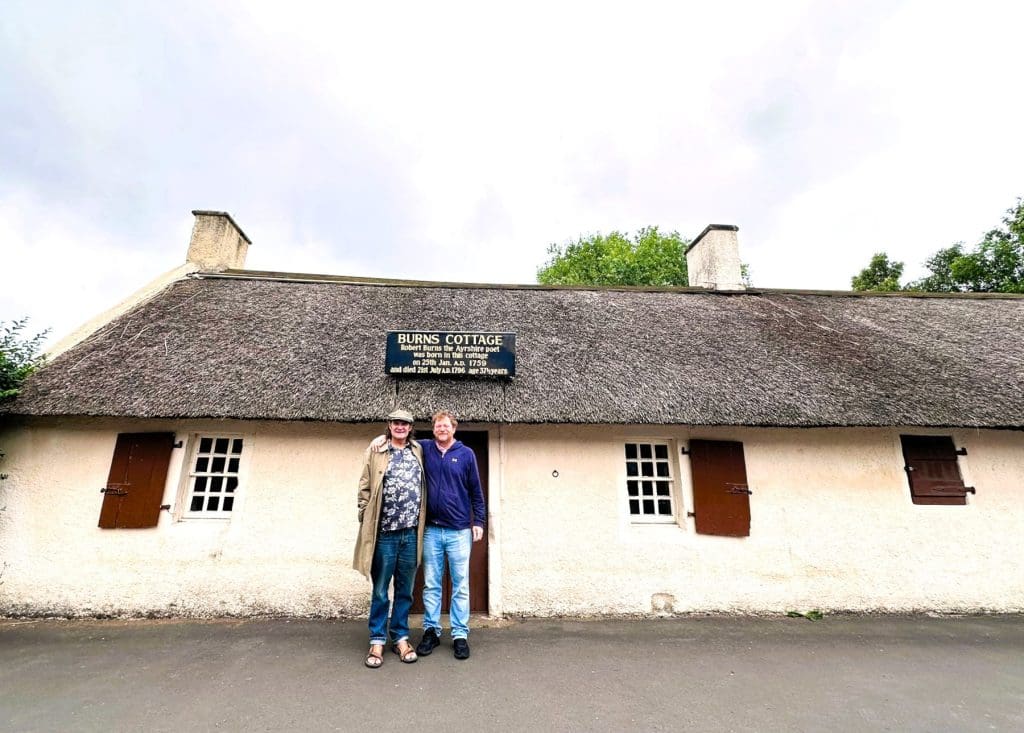
Although there is a statue of Rabbie Burns close to Ayr railway station, and Tam o’ Shanter is based in the town, our road trip through Ayrshire starts just down the road in Alloway.
The simple cottage where Burns was born and died, still stands by the side of the road. Nearby is the more expansive Robert Burns Birthplace Museum which has tours.
Further along the road is the River Doon and the Brig o’ Doon (Bridge of Doon) which Tam crosses on his trusty mare Meg to escape the clutches of some witches he had drunkenly offended on his way back home from a night in Ayr. There he had sampled the local pubs with his ‘ancient, trusty, drouthy (“thirsty”) crony’ Souter (cobbler) Johnnie, who entertained both Tam and the landlady with his lavish tales.
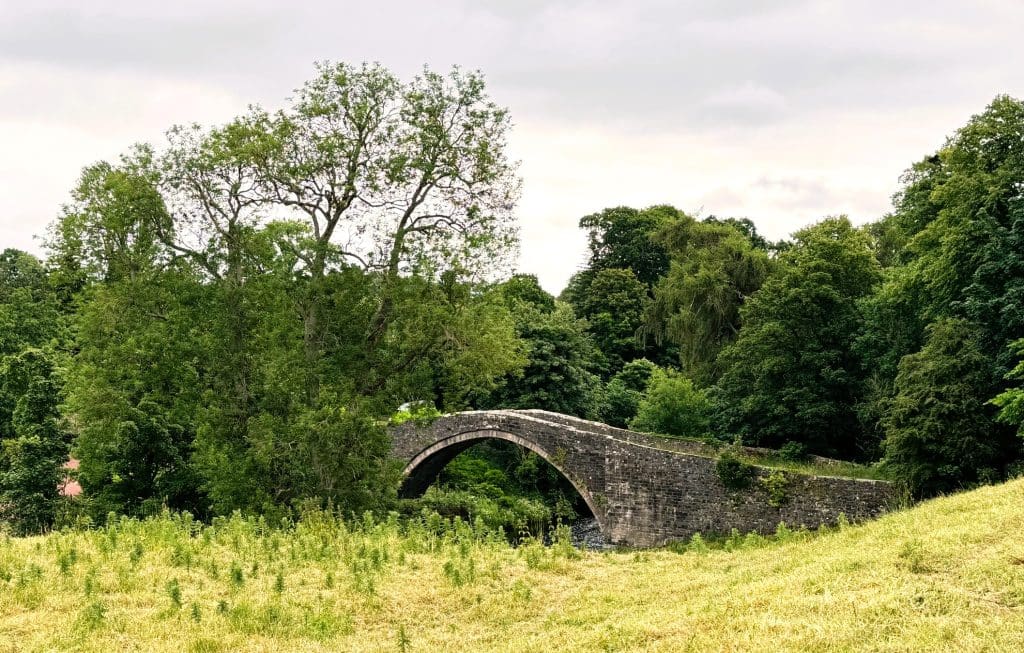
Souter Johnnie was based on John Davidson who lived in the cottage which is strikingly similar to the one where Burns was born, in the village of Kirkoswald. Despite his drinking deeds, Davidson lived to the ripe age of 80, far outliving Rabbie Burns, who died at the age of 37 ½ years in 1796. His cottage is now the National Trust property called Souter Johnnie’s Cottage.
Next to the cottage is The Souter’s Inn, which is built on the site of the school that Burns attended. Here we had the most wonderful smoked haddock gratin dish, from the award winning kitchen.
Dunure Castle
Ayrshire is much more than the setting for a Rabbie Burns road trip. The coastline is spectacular especially on fine days when the Isle of Arran and Holy Isle are clearly visible. Leaving Rabbie Burns’ Cottage, we hug the coast towards the Heads of Ayr, until we reach Dunure Castle.
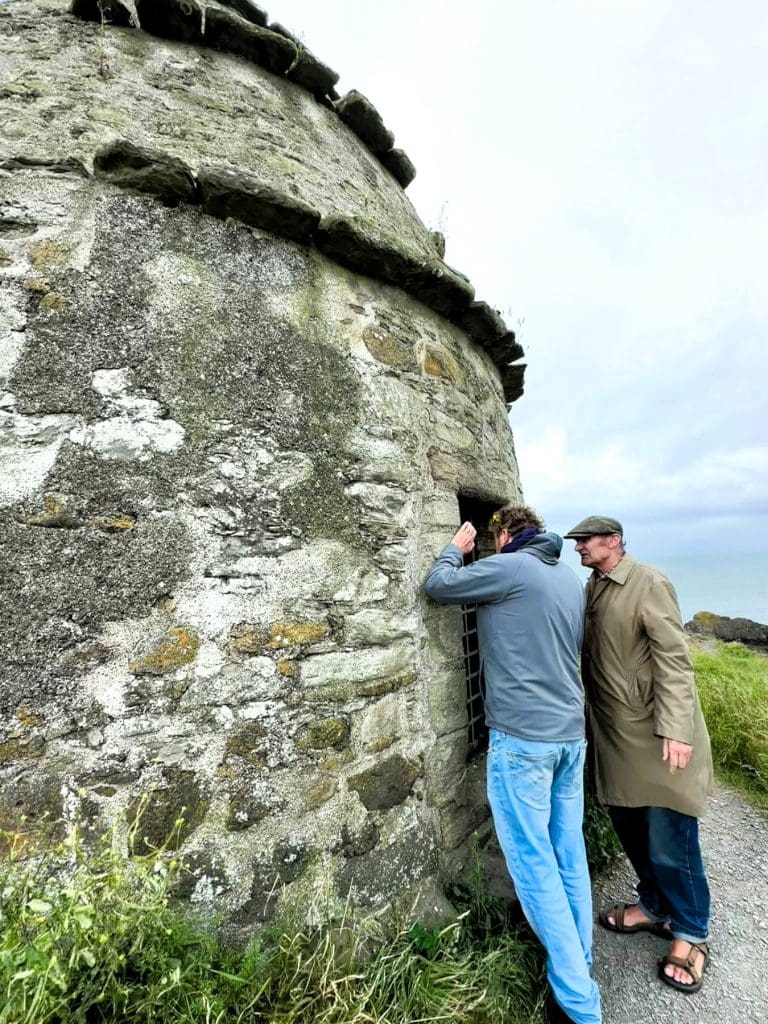
It was here in 1570 that Allan Stewart, the lay Commendator of Crossraguel Abbey was tortured by Gilbert Kennedy, fourth Earl of Cassilis, over a dispute regarding abbey lands and taxes; his feet were burned over a fire. Mary Queen of Scots also visited in August 1563.
Dunure Castle is a medieval fortress, one of many along the coast, which now lies in ruin. It also has the most interesting conical structure beside it where people used to keep pigeons for food. On our visit a couple of pigeons were still nesting there.
Electric Brae
One of the most unusual national phenomena you will find anywhere in the world is a short distance from the castle along the A719.
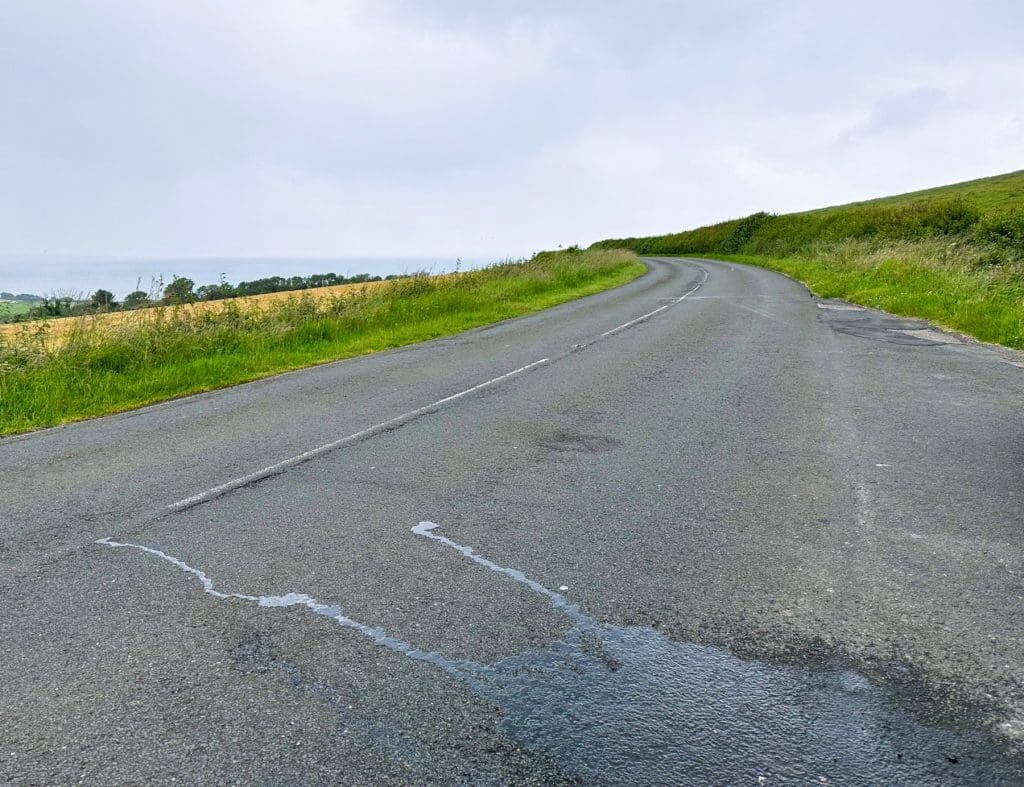
The Electric Brae is a quarter-mile stretch of road, where the land appears to be sloping downwards when it is in fact rising. If you let your car off the break, it will naturally roll up the hill – or at least that is how it appears. Apparently, the effect is created by the topography of the adjoining fields, although initially it was thought the phenomenon was created by electricity – hence the name.
As a boy, Boon used to come here and test the theory by pee-ing on the road. We stop in the lay-by next to the marker stone and pour the contents of our water bottle which appears to flow upwards.
Culzean Castle
Souter Johnnies Cottage is not the only National Trust Property in Ayrshire. Our next stop is Culzean Castle, which was designed for David Kennedy (apparently no link to the US President), the 10th Earl of Cassilis between 1777 and 1792.
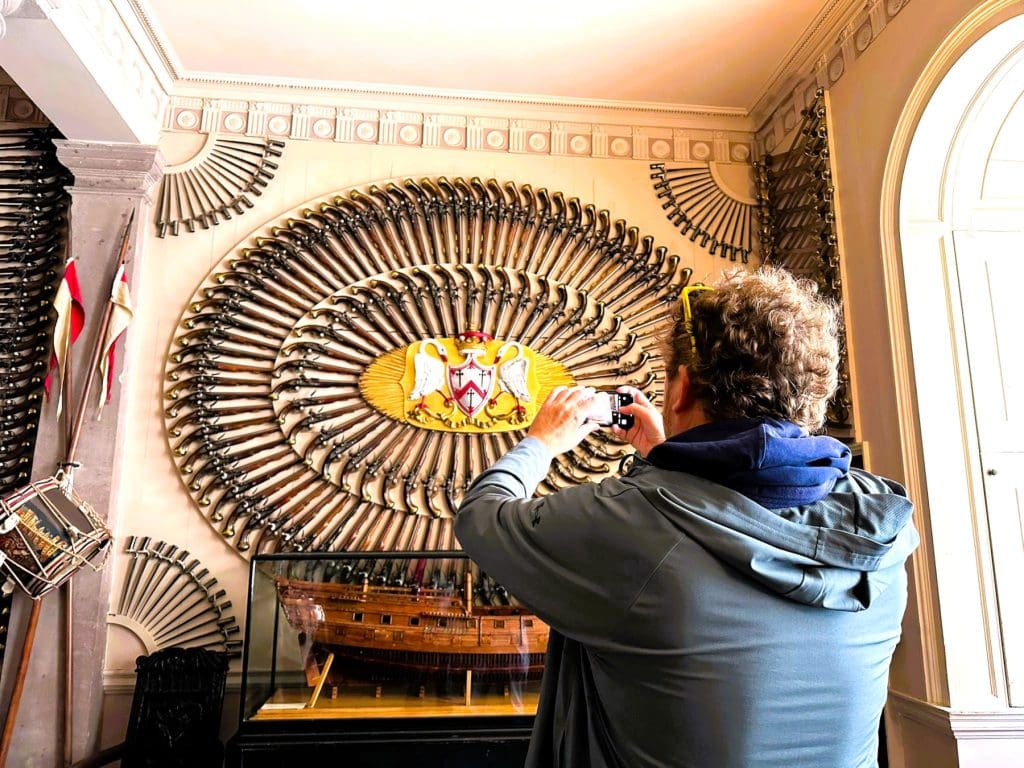
The spectacular castle is set in a 260-hectare country park overlooking the Firth of Clyde. It has a deer park, swan pond and a lovely beach, as well as 40 buildings including some follies. The castle was used as one of the sets for the 1971 film The Wicker Man.
Most spectacular is Culzean Castle itself with its glorious Oval Staircase. There is also a mesmerising collection of pistols and swords. The Kennedy family gave the property to the National Trust in 1945 on the condition that the apartment at the top was handed over to Dwight Eisenhower. The Supreme Commander of the Allied Forces in the Second World War stayed here four times including once whilst President. There is a small display about the 34th President of the United States in the castle, as well as more equitably a list of the staff who have worked here.
Trump and Turnberry
Eisenhower is not the only US President with links to Ayrshire. In 2014, Donald Trump bought Turnberry, including all three courses and its magnificent hotel for a reported $60 million, renaming it Trump Turnberry with characteristic self-effacement.
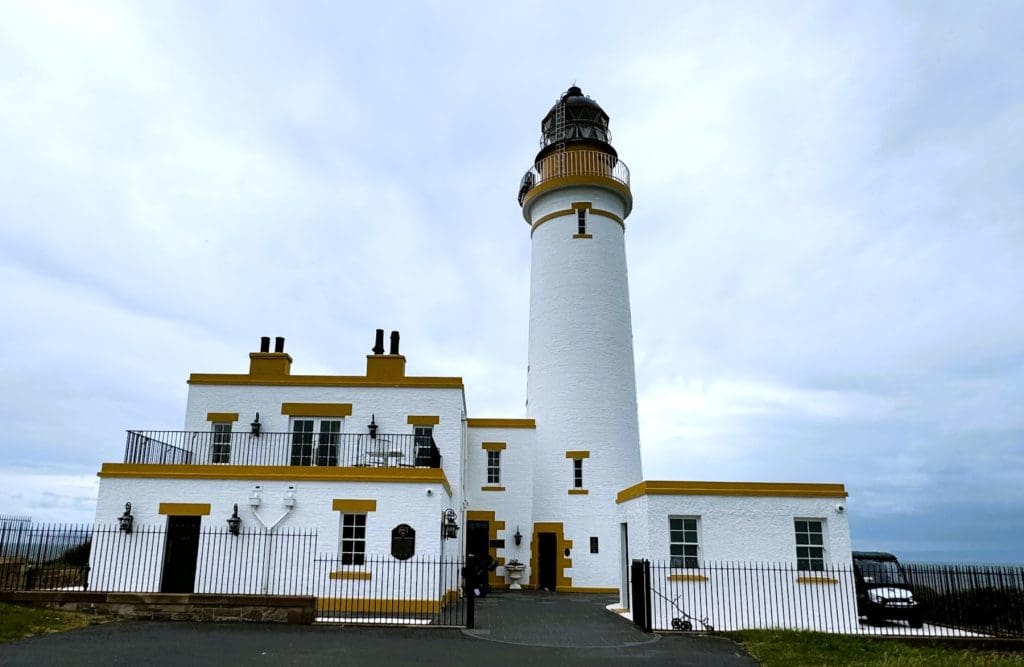
The property includes the magnificent Turnberry Lighthouse, which was built by Thomas Stevenson, father of the author Robert Louis Stevenson, in 1879. The recently restored lighthouse offers great views of the sea and Ailsa Craig. The lighthouse is reachable across a path through the heart of the course.
King Robert Bruce was born nearby. Although we could not find a plaque stating precisely where we assumed it was at some small ruins close to the lighthouse.
From Girvan to the Isle of Whithorn
After Turnberry we follow the coast through Girvan, which has a great beach. Then on to Lendalfoot, with its statue to the Russian cruiser Varyag, which was scuttled here in 1905.
We then continue to the delightful fishing village of Portpatrick, over the border in Dumfries and Galloway. My only regret is we have insufficient time on our road trip to stay here.
Our final scheduled stop is on the Isle of Whithorn, which is actually a peninsula. This has the thirteenth-century Saint Ninian’s Chapel marking the point where Christians first came to Scotland.
Wigtown and Ayr
By now time is turning against us. As I want to follow in the footsteps of Tam to frequent some of the pubs in Ayr, we head back, first inland and then back along the coast.
We don’t have time to visit Galloway Forest Park, which is noted for its dark skies – in any case it was a cloudy evening – but we do stop off at Wigtown, Scotland’s National Book Town, similar to Hay on Wye in Wales and Fjaerland in Norway.
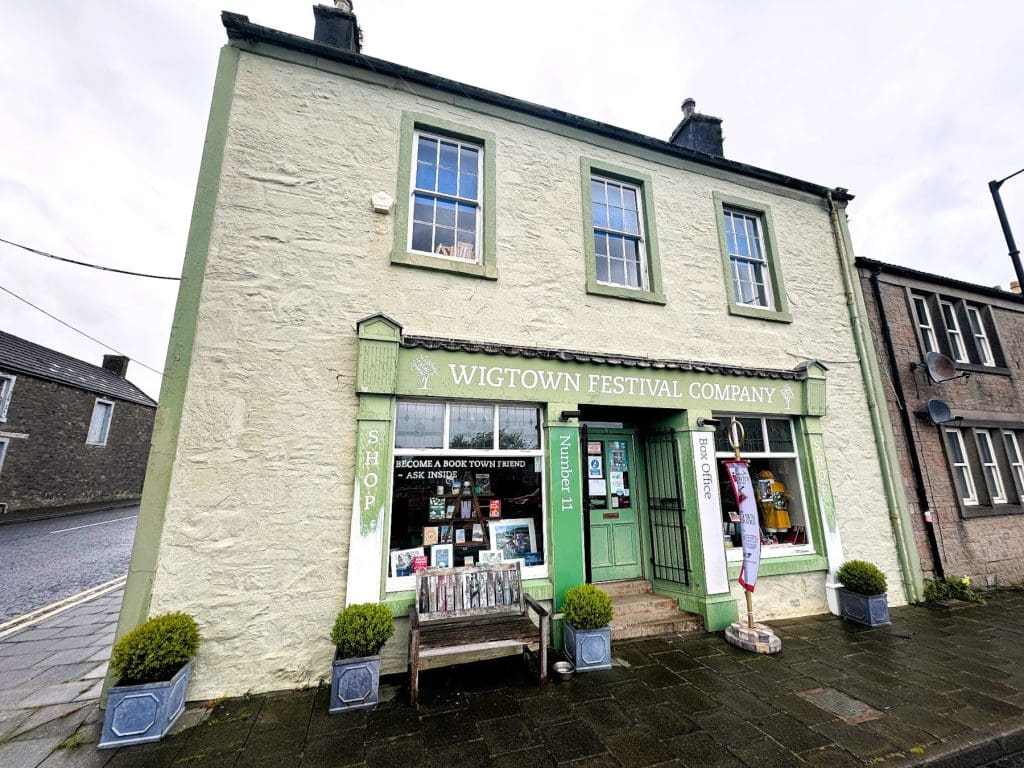
This is a lovely little town, littered with second-hand bookshops, best visited during the annual Wigtown Book Festival.
The rain lashes down on our way back to Ayr. It is a night that might have scared Tam, so we only just manage to make it to the Wellington for some beers and whiskies once back in town.
I’m not quite sure how bonnie the lassses are in Ayr, but the lassies are most definitely bonny, especially Maggie, whose second birthday it was that evening and kindly shared her birthday chocolate cake with us – although we declined the doggy pizza.
Road Trip Through Ayrshire
Note : If you wish to follow this drive, then Souter Johnnie’s Cottage lies between Culzean Castle and Turnberry.
